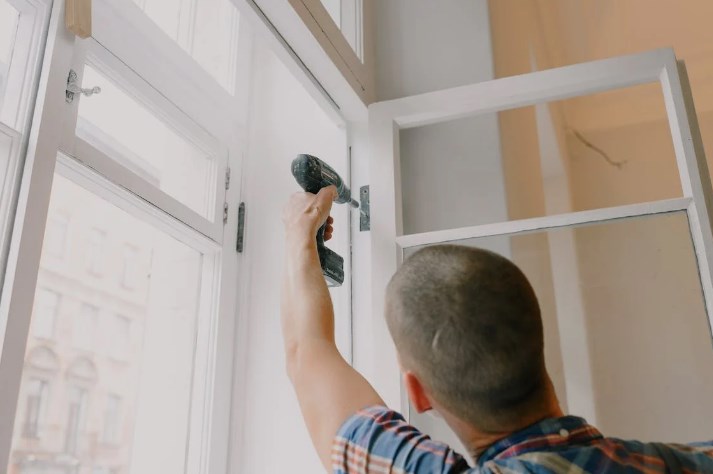If your windows are old or appear damaged, replacement windows in Houston tx might be the best option. But before placing your order for replacements, you should ensure they fit like a glove. Otherwise, you could be stuck with windows that won’t work as expected or look wonky. It is also important to focus on energy-efficient windows installed by professionals with years of experience in the business.
Accurate measurements are integral to the window replacement process. But how do you ensure your measurements are spot on? Let’s help you out.
First Things First
Grab a pencil, tape measure, ruler, and piece of paper. You’ll also need a ladder to reach the top of the frame (it also helps to have another set of hands).
Create a worksheet of sorts by jotting down the measurements for each side of the window (width, height, and depth). This helps to avoid confusion and ensures you don’t miss any corners or sides. Depending on the number of windows you plan to order, you might need to label your measurements based on their location, such as the number one window in your living room or North Bedroom window – whichever label tickles your fancy.
Square Check
This simple yet critical step involves ensuring all corners of the window frame are perfectly perpendicular to each other or at a 90-degree angle. If one corner is slightly off, it can cause issues during installation and ultimately affect the overall look and function of your windows. For instance, a lopsided window might fail to open.
To check for squareness, extend your tape measure diagonally across each window corner, where the trim meets the frame. If the measurements match, your window is nice and square. Specifically, the numbers should be within 1/4 inch of each other (at most). If not, you may need to adjust the walls around the window frame for a proper fit. Alternatively, new construction windows would suffice.
Width Measurement
Use the tape measure to determine the width of your old or existing windows. For best results, measure the width at the top, middle, and bottom points. For instance, for the top measurement, the start and end points should be where the trim meets the frame at both ends.
Repeat the same process for the middle and bottom while noting each measurement. The smallest of the three measurements reflects your window’s estimated opening width and should be your reference when ordering a replacement.
Height
Follow the same process for height or vertical measurements. In this case, measure the left, middle, and right sides (from the bottom where the trim meets the sill to the top of your window frame or jamb). The window jamb is the part of the frame that butts up against your wall.
To access the windowsill for an accurate measurement, open the window sash. And for sloped windows sills, the sill’s highest point should be your starting point. Again, go with the smallest number out of the three measurements.
Depth
This refers to the space between the window trim and the wall studs – specifically, the depth of the window’s pocket. Open your window and measure the frame from its outer edge to its inner edge using a tape measure at several points for accuracy’s sake. Check the measurements you’ve noted and use the smallest one as your reference.
Window depth is usually a nonissue for traditional homes. However, the opening might be too narrow to fit replacement windows – as with modular or mobile homes.
If you plan to replace picture windows or variants you can’t open, take measurements on both sides of the glass and add them together. Then, include the thickness of your panes. For instance, double-glazed panes are generally 1/2″ wide, while triple-pane windows are 1 inch thick. For single planes, factor in 1/8 of an inch.
Industry standards dictate that the depth shouldn’t be less than 3¼ inches to ensure your replacement windows fit. Otherwise, you may need custom-built frames or windows for a proper installation, which can increase your cost.
Measuring Other Types of Windows
While most windows follow the same measuring process, certain window types might differ. For instance, double-hung windows usually have two separate sashes with different measurements. Likewise, the design of bay windows means that you’ll have to break down the measurements for each panel. On that note, here’s how to measure various windows to ensure a proper fit.
Bay Windows
Although bay windows lend dimension and depth to your space, they can throw you a curve when planning to replace them. Even so, the process isn’t complicated. Here’s how to do it:
Measure the width of each panel (left, center, and right). The inner return of the frame should be your starting point – where the frame meets the trim, the sill, and the joint with the next panel.
Next, measure the height in three places (from the sill to the top of each window frame). Ensure to start at the same point for all the panels and measure each independently. Generally, expect the height to be equal for all the panels, plus or minus a few millimeters. Also, determine the dimension of the entire window – width, and height.
Double-Hung Windows
The process for double-hung windows is similar to other windows. First, measure the width and height of each panel at several points – the same as you would for single-hung windows. Sometimes, the panels aren’t identical, meaning you need measurements for each.
Truncate the Numbers
Let’s assume your smallest measurements are on the sheet with values like left window width – 40 3/4 inches or right window height 31 14/16 inches. You should round the measurements down to the nearest eighth of an inch and note them as 40 6/8 and 31 7/8. These final values will ensure your new windows are slightly smaller than your openings.
Double-check all the numbers – and confirm that each panel’s height, width, and depth measure up. As the adage goes, measure twice and cut once. So, it won’t hurt to take your time while measuring windows.
Feeling like you’re up to the task? Well, often, there’s no margin for error when taking window measurements, implying a mistake could lead to a costly outcome. If you run into discrepancies, we recommend consulting a pro for guidance. For instance, the pros at Maverick Windows can accurately measure your windows and install customized units. You may also explore our website at https://maverickwindows.com/window-replacement-houston// for insights on the types of windows we install and establish why we’re the go-to firm in Houston and surrounding areas.
Name, Address, and Phone
- Maverick Windows,
- 4552 Beltway Drive, Addison Texas 75001,
- 214-302-8541

